Li Xiaodong's Liyuan Library wins inaugural Moriyama RAIC International Prize
By Bustler Editors|
Monday, Oct 13, 2014

Related
The Liyuan Library by architect Li Xiaodong was announced as the recipient of the inaugural Moriyama RAIC International Prize during an award ceremony in Toronto, Canada on October 11. Launched earlier this year by the The Royal Architectural Institute of Canada (RAIC) Foundation and distinguished Canadian architect Raymond Moriyama, the Moriyama RAIC International Prize is a biennial award for the best building or project in the world.
Now one of the world's largest architectural prizes, it consists of CAD$100,000 and a sculpture designed by Canadian designer Wei Yew. Moriyama and RAIC established the award in effort to raise the international stature of RAIC and the work of Canadian architects.
Below is a recap from Terri Peters -- a longtime contributor to our sister site Archinect -- who attended the awards ceremony this past weekend.
"Designed to inspire Canadian architects and raise the level of ambition in Canadian architectural culture, the inaugural 2014 Moriyama RAIC International Prize of $100,000 CAD has been awarded to Liyuan Library, a dramatic and beautiful project in Jiaojiehe China. The building is a simply detailed, glazed volume screened by locally sourced wood twigs, set in a stunning rural landscape. Designed to make a big impact in its social context, the community-run facility is building its collection asking visitors to donate two books for each one they borrow. The award is for a 'single, transformative work of architecture'."

"The award was founded by esteemed Canadian architect Raymond Moriyama and this year´s prize was judged by jurors Brian Mackay-Lyons, Patricia Patkau, Bing Thom, Maxime Alexis-Frappier, Barry Johns and Edward Cullinan. The submission guidelines were surprisingly open: any building, anywhere, any program, any size, by architects or designers. The main stipulation was that it must have been in use for at least two years."

"Designed by Bejing-based Li Xiaodong Atelier, the Liyuan Library opened in 2012 and has been widely reviewed (see Archinect's ShowCase feature) and won several awards including a World Architecture Festival award. The dramatic interior has integrated shelving, furniture and stairs. A spatially diverse, stepped section relates to the natural landscape and carves out spaces for sitting together, reading and stretching out."


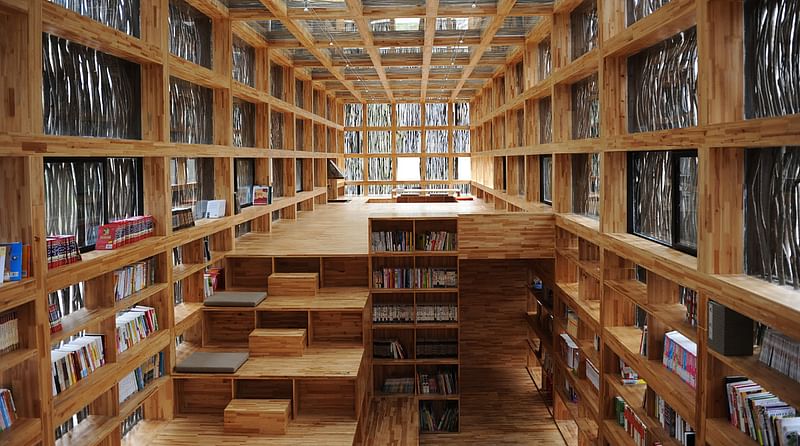
"Daylight is an important quality in the main space, using variation in the timber screens on the façade. The materials palette of wood for the structure, furniture, cladding and finishes are an important part of the experience, with one visitor quoted as describing the inside as feeling like being inside a giant hollowed out tree. When the building won the Architecture of Necessity Award in 2013 the architect explained “architecture is about finding the point of 'no more and no less'."

"The small library is 175m2 with a construction budget of about $185,000 CAD. The message that this prize sends out is clear: ambitious architectural designs can be found anywhere, for almost any budget and be designed for all kinds of users. The Jury Chair, architect Barry Johns argues 'We need more of these types of perhaps modest, yet powerful buildings which make architecture from a deep understanding of people, culture, context, site, materiality and light'."

"Li Xiaodong has an international background with experience living in Singapore and the Netherlands. His work draws on his research gained in his PhD in Architecture relating to sustainable site planning. His work is concerned with integrating Chinese and global artistic and technological concepts, and combining historical and contemporary techniques and forms. He designed a processional sequence of spaces ending in what he likens to 'a zen garden' in the ambitious group show 'Sensing Spaces: Architecture Reimagined' at the Royal Academy of Arts earlier this year alongside works by architects Kengo Kuma and Alvaro Siza."
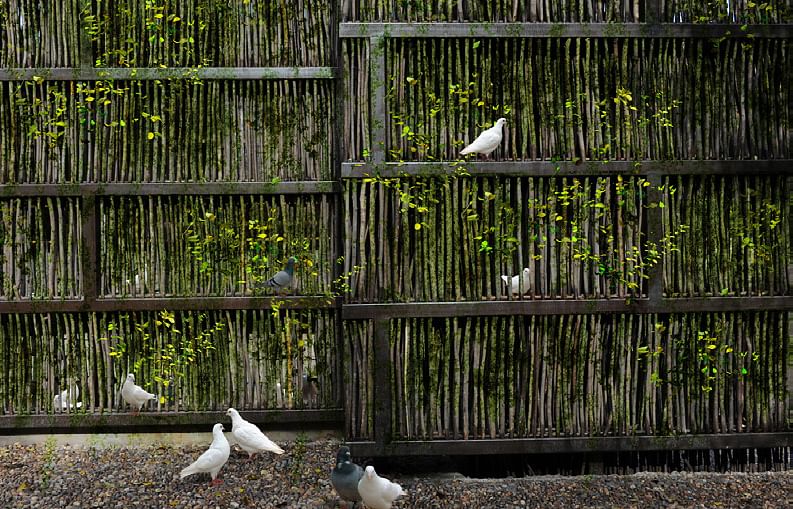
"At the award gala held October 11 at the newly opened Aga Khan Museum in Toronto, there were two big surprises: the winning entry and the competition. First it seems amazing that such a small, modest building so far away could embody so many concepts we hold dear in Canada. The design is resourceful, modest yet ambitious, and seemingly at home in its landscape. The community building focuses on natural lighting, passive heating and cooling techniques, and builds community involvement with book exchange scheme. The building´s small size, use of low-tech, local materials and its modest expression make it an unusual choice for one of the largest architectural prizes in the world."

"Watching the lecture and video by the architect that followed the announcement, it is hard to gauge the reaction of the 350 (mainly) architects in the room. Were they surprised? Inspired? Did they imagine a more high profile and expensive cultural project would win? Raymond Moriyama said at the awards ceremony that the award was 'designed to give Canadian architects a kick in the ass' – will this prize work? Will it instigate the important discussion about the value of exemplary architecture and what it means to be a Canadian architect?"
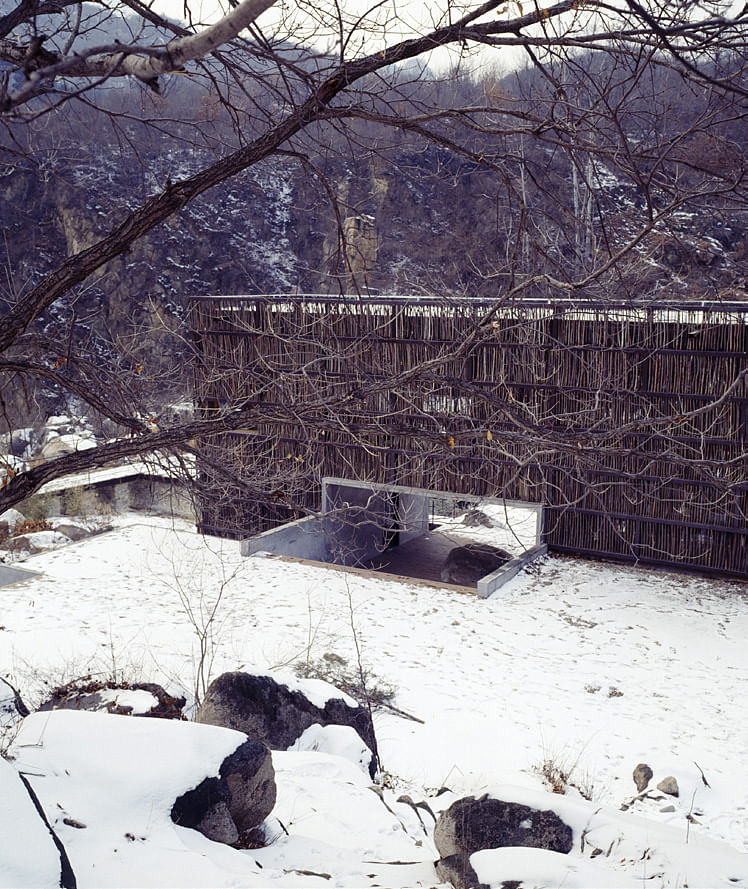
"Another surprising aspect of the award is the news that entries were submitted for projects located in nine countries: Canada, China, France, Germany, Israel, Japan, South Korea, the United Kingdom and Tajikistan. With such an open brief it is very surprising there were not more entries. No entries located in the USA? Scandinavia? Elsewhere?
Three $5,000 CAD scholarships sponsored by the BMO Financial Group were also awarded to students of Canadian architecture schools. The awards were based on 1,000 word essays about why they wanted to become an architect. From over 150 submissions in both English and French, the awards were won by Loïc Jasmin of Université de Montréal, Benny Kwok of Dalhousie University and Shu Yin Wu of University of Waterloo.
The next award is set for 2016, let´s hope more architects enter and continue to raise the level of public debate about what makes award-winning architecture."
Click the thumbnails below for more photos.

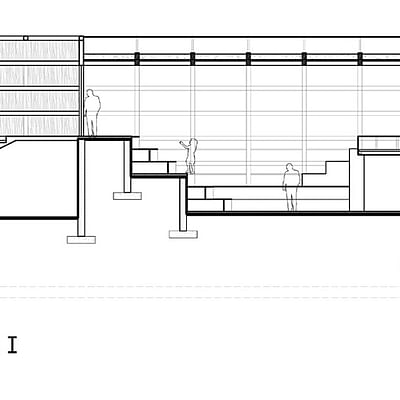
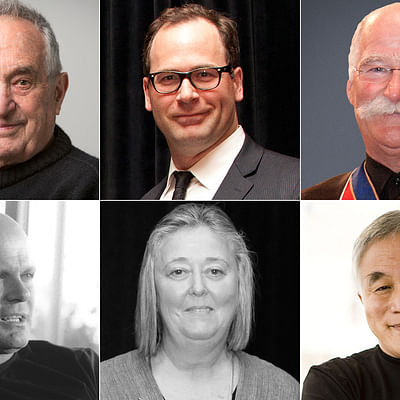
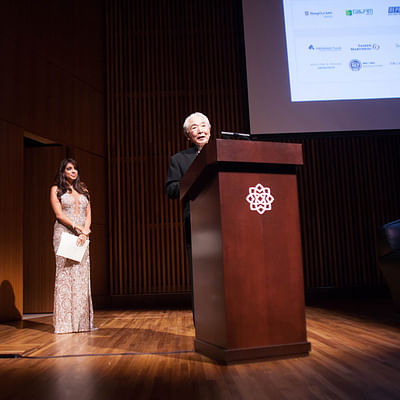
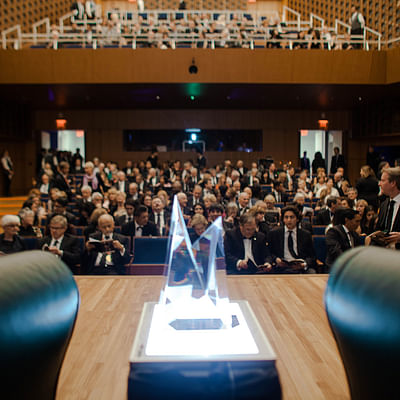
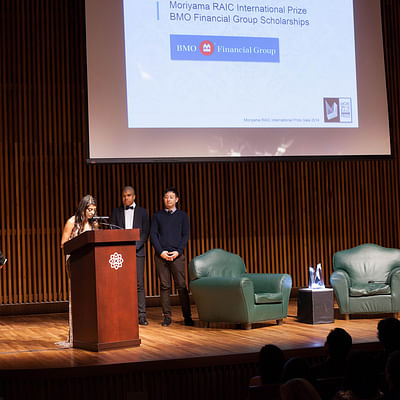
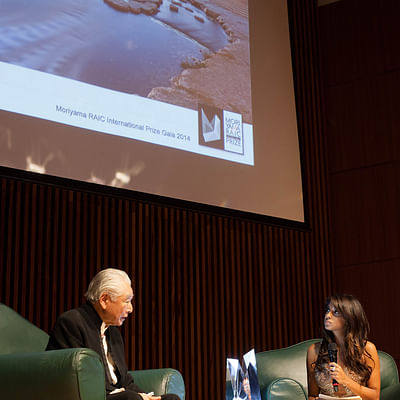

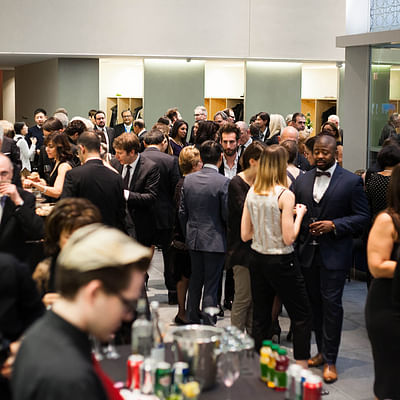


Share
0 Comments
Comment as :